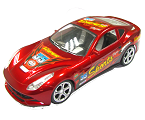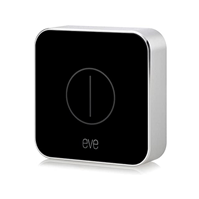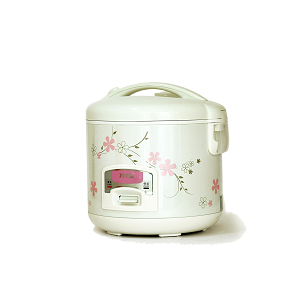Remote control cars are a popular hobby for people of all ages. Whether you’re looking to race competitively or just want to have some fun in your backyard, a remote control car can provide hours of entertainment. However, with so many different types of remote control cars on the market, it can be difficult to know what to look for when making a purchase. In this article, we will discuss the most important factors to consider when buying a remote control car.
- Type of Car: The first thing to consider when buying a remote control car is the type of car you want. There are many different types of remote control cars, including buggies, trucks, crawlers, and more. Each type of car is designed for a specific purpose, so it’s important to choose a car that suits your needs.
Buggies are great for racing on flat surfaces and are designed for speed and agility. Trucks, on the other hand, are more rugged and are better suited for off-road use. Crawlers are designed to navigate over rough terrain, such as rocks and mud, and are slower than buggies and trucks.
- Scale Size: The scale size of a remote control car refers to the size of the car in comparison to the actual vehicle it’s modeled after. Common scale sizes include 1/10, 1/8, and 1/5. The larger the scale size, the bigger the car will be.
When choosing a scale size, it’s important to consider the space you have available for racing and storing your car. If you have a large backyard or access to an open field, a larger scale size may be appropriate. However, if you plan on racing indoors or in a small space, a smaller scale size may be a better option.
- Motor Type: The motor is the heart of any remote-control car, and there are two main types of motors to choose from: electric and gas-powered.
Electric motors are more common in remote control cars and are powered by rechargeable batteries. They are quieter, cleaner, and easier to maintain than gas-powered motors. Electric motors are also less expensive than gas-powered motors.
Gas-powered motors, on the other hand, are more powerful and can reach higher speeds than electric motors. They are also more expensive and require more maintenance than electric motors. Gas-powered motors are best suited for experienced racers who want to compete at a high level.
- Suspension: The suspension system of a remote-control car is designed to absorb shock and keep the car stable on rough terrain. A good suspension system is essential for off-road racing and crawling.
There are two main types of suspension systems: independent and solid axle. Independent suspension systems use individual shocks for each wheel, allowing for greater flexibility and stability on uneven terrain. Solid axle suspension systems use a single beam to connect both wheels, which provides more stability on flat surfaces.
- Tires: The tires of a remote-control car are designed to provide traction and stability on different surfaces. There are three main types of tires: slicks, off-road, and all-terrain.
Slicks are designed for smooth surfaces and provide the most traction on pavement and other flat surfaces. Off-road tires are designed for rough terrain, such as dirt, rocks, and mud. All-terrain tires are a compromise between slicks and off-road tires, providing good traction on both smooth and rough surfaces.
- Radio System: The radio system is the component that allows you to control your remote control car. There are two main types of radio systems: 27MHz and 2.4GHz.
27MHz radios are older technology and are prone to interference from other electronics, such as cell phones and televisions. They are also limited in range and can only be used in short distances.2.4GHz radios, on the other hand, are the newer and more advanced technology. They offer longer range, better connectivity, and are less prone to interference. They also allow for multiple cars to be used in the same area without interfering with each other.
When choosing a radio system, it’s important to consider the range and number of channels available. Some radio systems allow for more precise control over your car, which is essential for competitive racing.
- Battery Life: The battery life of a remote control car is an important factor to consider, especially if you plan on racing for extended periods of time. The battery life will depend on the type of motor and the size of the battery. Electric motors typically have shorter run times than gas-powered motors, but they can be easily recharged.
When choosing a remote control car, it’s important to consider the battery life and whether or not extra batteries are available. Some remote-control cars come with spare batteries, while others require you to purchase them separately.
- Durability: Remote control cars can take a beating, especially if you plan on racing them off-road. It’s important to choose a car that is durable and can withstand crashes and rough terrain.
Look for a car with a strong chassis and suspension system, as well as high-quality tires. Some remote control cars also come with protective bumpers and other features that can help prevent damage. - Price: Remote control cars can range in price from under $50 to over $1,000. The price will depend on the type of car, the motor, the scale size, and other features.
When choosing a remote control car, it’s important to set a budget and stick to it. Consider what features are most important to you and choose a car that fits your budget. - Brand and Reputation: Finally, it’s important to consider the brand and reputation of the remote control car you’re considering. Look for a brand with a good reputation for quality and customer service.
Read reviews and talk to other remote control car enthusiasts to get an idea of which brands are the best. Choose a brand with a good track record of producing high-quality, durable remote control cars.
Conclusion
When buying a remote-control car, there are many factors to consider, including the type of car, scale size, motor type, suspension, tires, radio system, battery life, durability, price, and brand reputation. By taking the time to consider these factors, you can choose a remote control car that is perfect for your needs and provides hours of fun and entertainment.

















